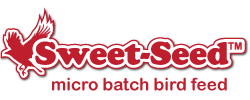Offering Water for Your Birds: What you Need to Know

With puddles, lakes, streams, rain, snow and other water sources available to birds, why is water such an important part of a birder's backyard? Understanding why birds need water and how to provide it to meet those needs will help you attract more birds to your yard and enjoy their aqua-tastic antics.
Why Birds Need Water
Water is far more important than just for drinking – in fact, some birds, such as hummingbirds that sip nectar or raptors that get liquid from the prey they kill – rarely drink at all. But all birds need water for other reasons…
- Preening: A bird will wet its bill or dampen its feathers before preening to help spread body oils along its feathers and to align feathers in the best position for flight and superior insulation.
- Bathing: Some birds take vigorous baths, shaking water all over their feathers. This is also part of their preening, and helps keep their feathers in peak condition.
- Cooling Off: Birds may bathe or stand in water to help regulate their body temperature on hot days, especially in dry regions where water sources may be very limited.
Offering Water in Your Backyard
Birds will use any available water that can meet their needs. A simple basin or dish of water can be used for drinking or bathing but may dry out quickly, especially if birds are splashing in it. A moving water source will minimize algae and insect growth to keep the water fresh and clean, and a flowing water source will actively attract birds with glittering sparkles and splashes. In the backyard, this means…
- Bird Baths: A simple basin-style bath, whether it is a dish on the ground or an elevated pedestal, is the easiest and most common way to provide water to backyard birds. Birds will visit a basin for drinks, and they may splash around for a quick bath. Basins come in many sizes and styles, and there is a bird bath that can fit in every backyard. Because the water is not moving, however, it may grow algae or insects more quickly, and can become contaminated with dirt, feces and other debris that could be dangerous to birds. Poor water quality can be minimized by turning a basin into moving water with the addition of a dripper or wiggler accessory, but the options are limited.
- Bird Fountains: A larger bath that incorporates a bubbler or basic dribbling fountain not only has a basin or shelf where birds can drink and bathe, but the moving water creates delicate splashing noises that birds can hear from great distances and watery sparkles they will see. This will attract a wider variety of species to take advantage of the water source. Simple fountains are also available in a variety of sizes and styles to suit many backyard décor schemes. Fountains still need cleaning and regular maintenance, but are less likely to grow extensive algae or harbor unwanted insects.
- Water Features: The best water for backyard birds is an integrated water feature, such as a backyard pond, waterfall or stream. This mimics natural water sources birds are most comfortable with, and if the feature is designed with shallow spaces that serve as basins and drinking areas, all types of birds will be able to use it. The flowing, splashing water will attract many birds, and a good quality water feature will include filters to keep the water clean with minimal maintenance. Regular scrubbing of perch areas and cleaning the filter will still be necessary, however, and very large or deep water features have their own care needs.
Make Your Water the Best for Birds
Whether you have a simple bird bath or an elaborate backyard waterfall, there are certain steps that should be taken to keep the water at its best for birds.
- Regular cleanings should include filtering or replacing the water and removing excess dirt, feces, leaves, algae and other unwanted items from the water so it stays fresh. Clean nearby ledges or perches as well so debris does not accumulate nearby.
- Add water to the basin, fountain or reservoir regularly to be sure it stays full. As birds drink and bathe, the water level will drop, and water is also lost through evaporation. When the water is too low, smaller birds will not be able to reach it.
- Consider adding a heating element or choosing a heated bird bath to provide liquid water to birds in winter. While birds can melt snow and ice to drink, doing so uses precious calories birds need for body heat.
With water in your yard, you will be amazed at how many birds begin to visit – even those that don't normally appear at feeders. With just one sip
Image by GeorgiaLens from Pixabay of this birding pleasure, you'll be thirsty to make your backyard even more bird-friendly.
